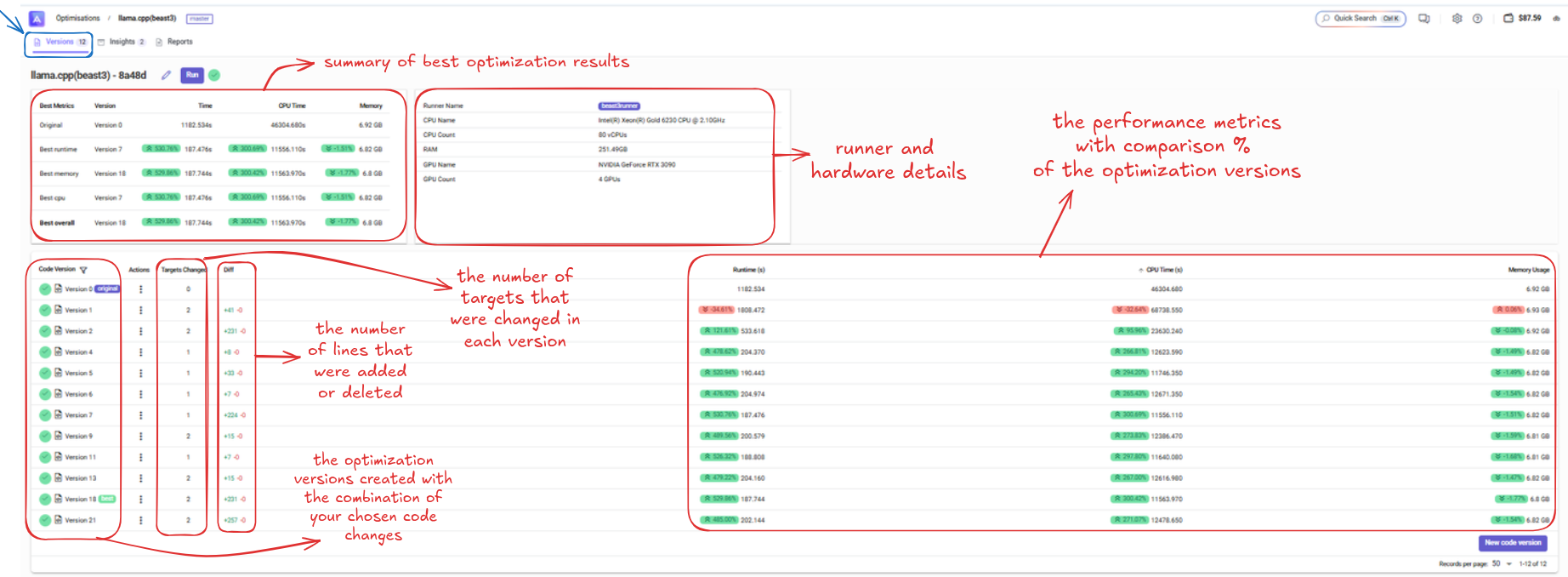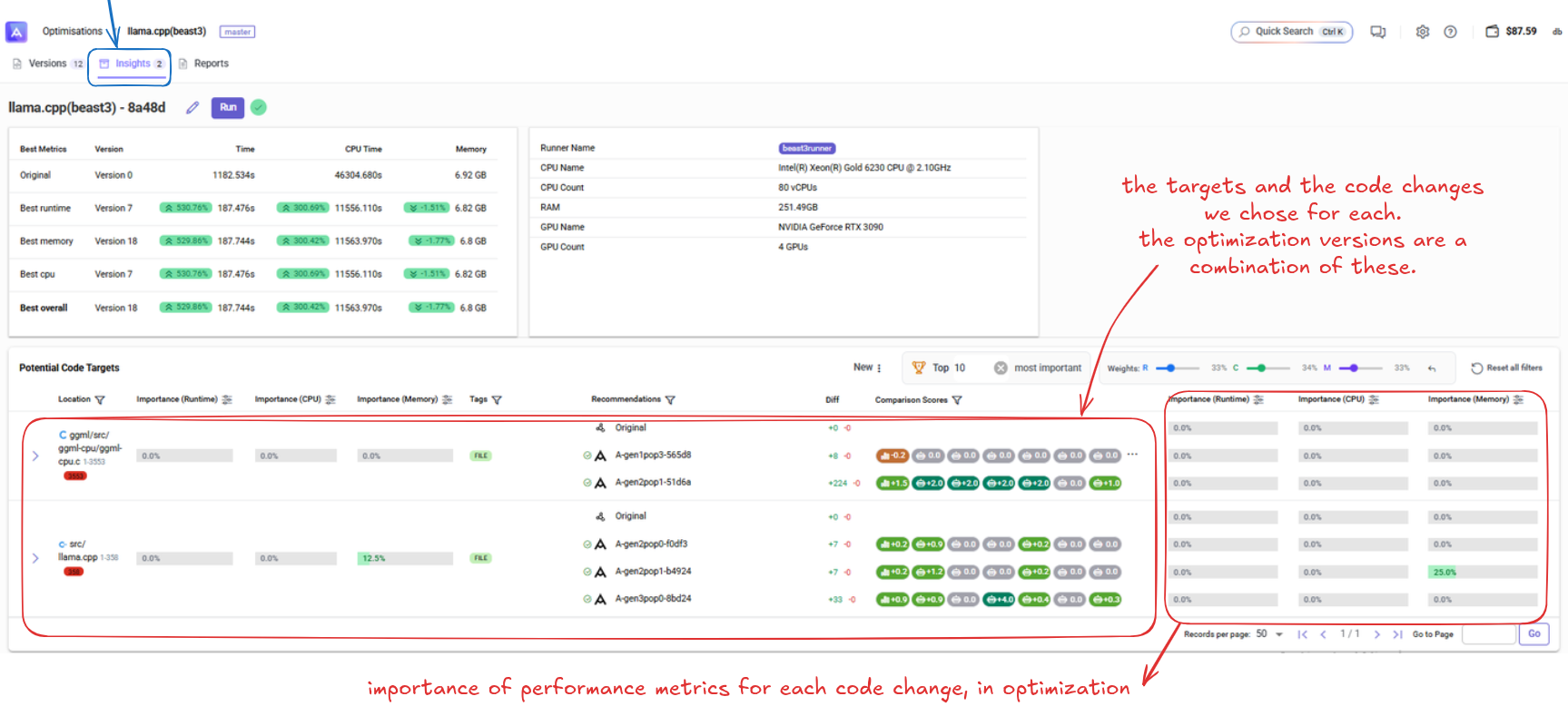Reviewing Optimization Results
Learn how to analyze optimization results in Artemis to select the best performing code versions.
Accessing Results
After your optimization completes:
- Navigate to Optimizations page
- Select your optimization
- View results in the Versions and Insights tabs
Understanding the Results
Performance Summary

The top section shows your best optimization results:
- Original: Your baseline code performance
- Best runtime: Fastest execution version
- Best memory: Lowest memory usage version
- Best cpu: Most CPU-efficient version
- Best overall: Best balanced performance
Each result shows:
- Version number: Which optimized version achieved this result
- Performance metrics: Time, CPU usage, and memory consumption
- Color-coded indicators: 🟢 Green = better, 🔴 Red = worse
Version Details
The main table displays all optimization versions with:
- Code changes: Lines added/removed for each version
- Performance metrics: Detailed timing and resource usage
- Comparison scores: Performance vs. original code
Runner Information
Hardware details of the system that ran your optimization, including CPU specifications and available resources.
Selecting the Best Version
For Speed-Critical Applications
Choose the Best runtime version - prioritizes fastest execution time.
For Memory-Limited Systems
Select the Best memory version - minimizes memory usage.
For Balanced Performance
Pick the Best overall version - optimizes across all metrics.
Key Insights

The Insights tab shows:
Code Targets
- File locations that were optimized
- Importance ratings for Runtime, CPU, and Memory impact
- Recommended versions for each code section
- Performance scores with color-coded results
Filtering Options
Use the importance filters to focus on:
- Runtime: Speed improvements
- CPU: Processor efficiency
- Memory: Memory optimization
- Most important: Top-priority optimizations
Quick Selection Guide
- Review the performance summary - identify which metrics matter most for your use case
- Check the color indicators - prioritize versions with green badges
- Consider code changes - fewer changes typically mean lower risk
- Select your version - choose based on your primary performance goal
Next Steps
After selecting your optimal version:
- Download the optimized code
- Test in your development environment
- Deploy to production
- Monitor real-world performance
After reviewing optimization results you can: